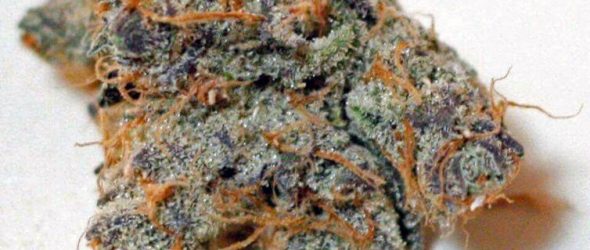Young adults with a history of frequent marijuana use showed a greater propensity for risky decision-making in a recent Oregon State University study.
Using a simulated gambling task, psychological researcher Anita Cservenka of OSU’s College of Liberal Arts found that participants who report frequent marijuana use were more likely to chase big rewards and ignore losses compared with participants who were not cannabis users.
However, she said, with this short-term study, it’s a bit of a chicken-versus-egg situation: Does marijuana make users more apt to make risky decisions, or do people with greater risk-taking tendencies use marijuana?
That question won’t be answered until scientists can conduct a long-term study following adolescents from the first time they used marijuana through adulthood, she said.
But the present findings, published recently in the journal Addictive Behaviors Reports, suggest that frequent marijuana users are more driven by rewards and less sensitive to losses than non-users. This behavior suggests one reason why it may be difficult to abstain from future substance use once someone has started using cannabis frequently, Cservenka said.
“Individuals may continue to use cannabis because of its rewarding effects, but they may be insensitive to negative consequences that may occur as a result of cannabis use,” she said. “Decision-making involves a number of different skills, like impulse control and cognitive flexibility, so some of these skills might be affected by prolonged substance use.”
For the experiment, Cservenka employed the Iowa Gambling Task, a card simulation frequently used to measure decision-making in substance use studies. The study involved 65 participants ages 18 to 22: 32 in the control group and 33 frequent marijuana users, defined as using marijuana five times or more each week in the past year.
In the simulation, participants started with a pot of $2,000 and got to choose cards from four decks, lettered A-D, which carry monetary gains and penalties. Cards may come with a reward of $50 or $100, but they may also carry “fees” of $50 to $1,250.
Participants were informed that some decks are better than others, and were told to treat the money as real money. The “advantageous” decks, as defined by researchers, are the ones associated with small rewards, but also small losses. The “disadvantageous” decks carry the biggest rewards, but also bigger losses, such that selections from these decks result in lower net earnings on the task.
Compared with the control group, marijuana users selected more cards from the decks that had large money earnings but also the potential for large losses, so they ended up with lower net scores on the task.
The implications of the study could be significant given the recent and ongoing growth of marijuana use around the country. A nationwide study in 2018 found that 25% of college students reported using marijuana in the past month. In Oregon, which legalized recreational marijuana in 2015, 19% of adults reported current marijuana use as of 2017, according to the Oregon Public Health Authority. Among men in Oregon, rates of current marijuana use increased from 14% to 23% from 2014 to 2017, while the rate among women doubled from 8% to 16%.
At the same time, studies have shown a continuous decline in the perceived risk of regular marijuana use over the past decade.
“What many people may not understand is that the type of cannabis people are using today may not be similar to the type of cannabis people used in the 1970s, when we saw similar rates of use,” Cservenka said.
The general THC content is higher today than it was in the ‘70s, and there are a greater variety of products available with even higher THC content, such as concentrates, she said.
“I caution against people thinking that cannabis has no negative effects or consequences to an individual because I just don’t think we have currently available information to be able to make those types of statements,” Cservenka said. “I think that individuals who may use cannabis should be aware that cannabis may be related to maladaptive decision-making.”
For future studies she would like to look more specifically at the types of marijuana participants are using, to better understand how usage affects individual behavior and decision-making.


